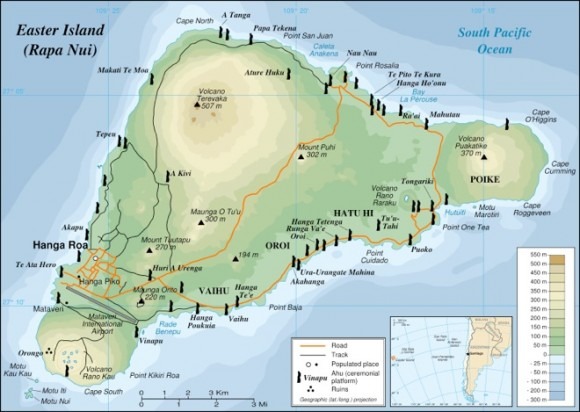Easter Island Statues Get New Theories From NatGeo
This month you'll be getting a greater taste of what it means to be a scientific researcher on Easter Island courtesy of National Geographic, but before the big study is dropped, a few key bits have been revealed. The first of these comes from archaeologists Carl Lipo of Cal State Long Beach and Terry Hunt of the University of Hawaii. These two fellows not only have new research leading us to believe that the island hadn't been inhabited until 400 years after common theory up until this point tells us it was, and they've found a new way that the famous rock head statues could have made their way to the shores of the island as well.
The first bit of this research that's been pushed thus far as the life and death of the original human inhabitants (and the stone head creators) shows them to have been relatively irresponsible with the ecosystem. In the 2005 book "Collapse" by UCLA anthropologist Jared Diamond, he shows Polynesians settling on the island at around AD 800, they choosing this remote, cool, and dry island to settle on with little thought of the consequences for farming and agriculture.

In his theory, these the inhabitants did indeed create the statues we see today, but the reason their society broke down was their cutting down of all the trees on the island without realizing that they wouldn't grow back quickly enough to maintain the environment. Once a tree is cut down on this island, it takes one whole heck of a lot more time to grow back than it does in a place that isn't ravaged by high winds and volcanic ash. Once the trees were cut down, the topsoil blew away and was destroyed, the people were forced to eat birds (all of the birds, as it were), then eventually each other. Once the Dutch arrived in 1722 on Easter Sunday, they found the inhabitants to have descended into barbarism.

New research from Libo and Hunt, published in their very recent book "The Statues That Walked," agrees with the idea that some sort of ecological disaster took place, but they've got a bit more to say about rats than Diamond's claims. This theory says that Polynesian settlers didn't arrive on the island until AD 1200 and that the rats that came with them on the boats they arrived on the island with took a large part in destroying the ecosystem. Rat teeth marks have been found on large amounts of buried nuts from Easter Island palms (now extinct), this leading these researchers to believe that the rats not only took a big bite out of the bird population, but the tree population as well – burying the nuts from the trees in this way stopped the seeds from being reseeded naturally, thus ending the tree line with great success.
As far as the stones went, it's been a common theory (with little evidence) that these massive heads were pulled down from the island's volcano (where their stone was indeed sourced) on massive sledges made of the wood from the trees that are now extinct. As part of the research done for this new project and study of the island, a team lead by Hunt and Lipo proved that with a "rock and roll" method of moving the stones with man-made ropes and a team of 18 people, the stones could very well have been maneuvered down from the volcano one at a time.
The footage of this moving of the stones as well as a whole bunch more research on the island will appear on National Geographic's "Nova" later this year – stay tuned!
[via LA Times]
